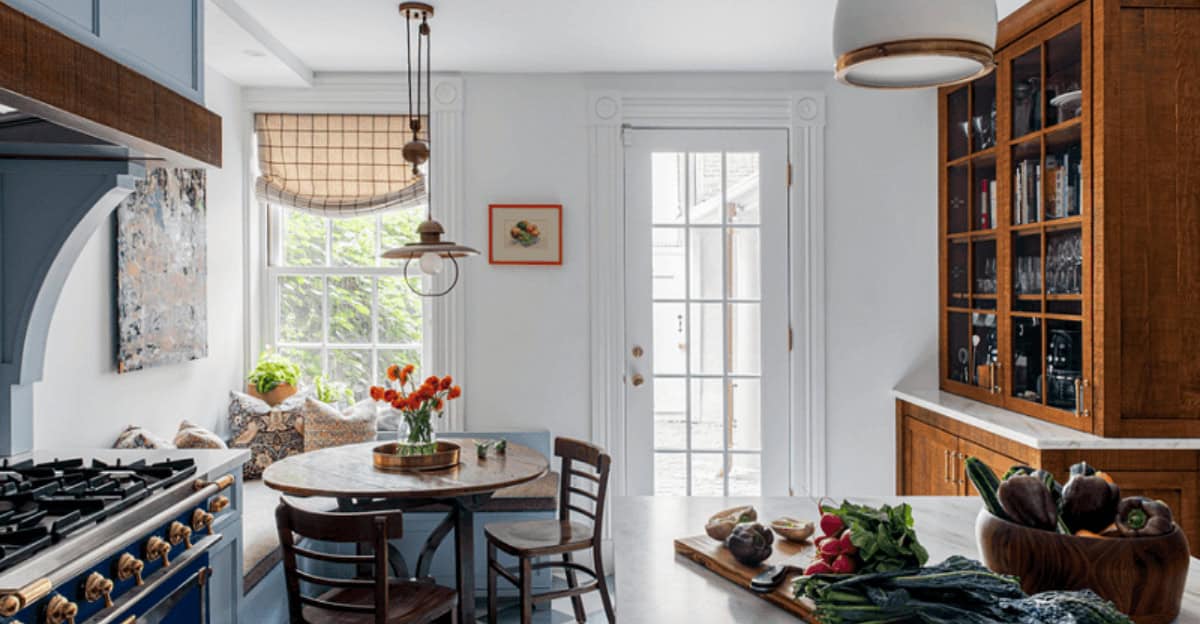The English kitchen style, characterized by its cozy, welcoming ambiance, is steadily gaining popularity as a preferred alternative to the modern farmhouse aesthetic.
Emphasizing timeless design elements and functional comfort, this style brings a unique charm to contemporary homes.
While the modern farmhouse is known for its rustic appeal, the English kitchen offers a more refined, understated elegance.
This shift highlights a growing preference for personalized spaces that marry old-world charm with modern functionality.
Let’s explore 10 key ways the English kitchen is replacing the modern farmhouse in interior design.
1. Warm Color Palettes
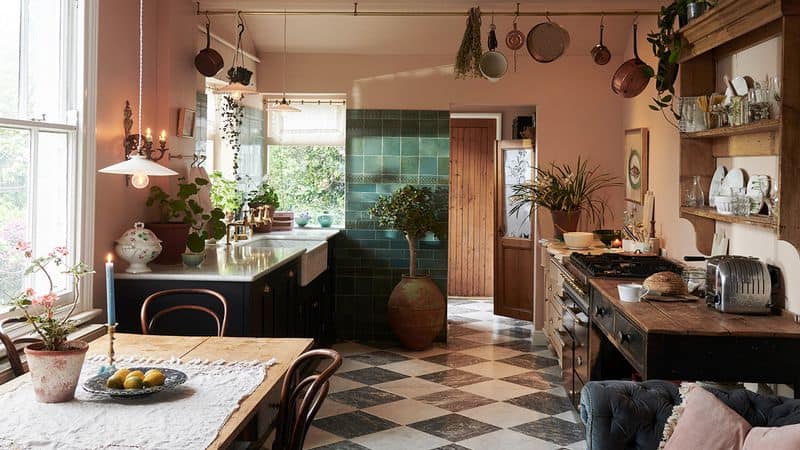
Warm color palettes in English kitchens evoke a sense of comfort. Earth tones, such as rich browns, soft creams, and muted greens, create an inviting atmosphere.
This color choice contrasts sharply with the often stark whites and greys of modern farmhouse designs.
Such palettes complement wooden cabinetry and vintage decor, enhancing the cozy vibe. The use of warm colors in an English kitchen not only makes the space feel more intimate but also more timeless.
Imagine sipping tea surrounded by warmth; it’s a subtle yet profound shift from the cool modern farmhouse style.
2. Traditional Cabinetry
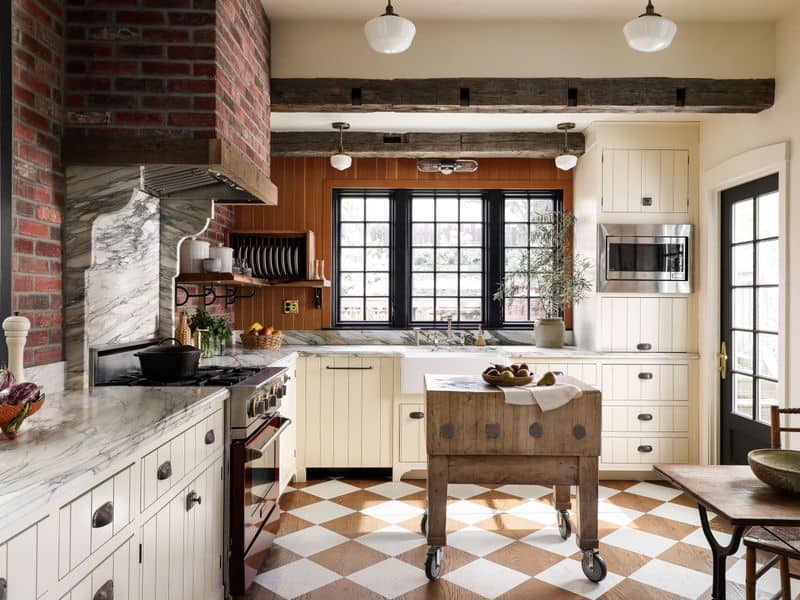
Traditional cabinetry in English kitchens replaces the sleek, minimalist look of modern farmhouse designs.
These cabinets often feature intricate woodwork, brass handles, and a classic, time-honored appearance. The emphasis on craftsmanship and detail brings character to the kitchen, elevating its aesthetic appeal.
Open shelves displaying fine china or antique kitchenware add to the charm, creating a lived-in, welcoming feel.
This contrasts with the sometimes impersonal, streamlined look of modern farmhouse cabinetry, offering a sense of history and personality instead.
3. Layered Textures
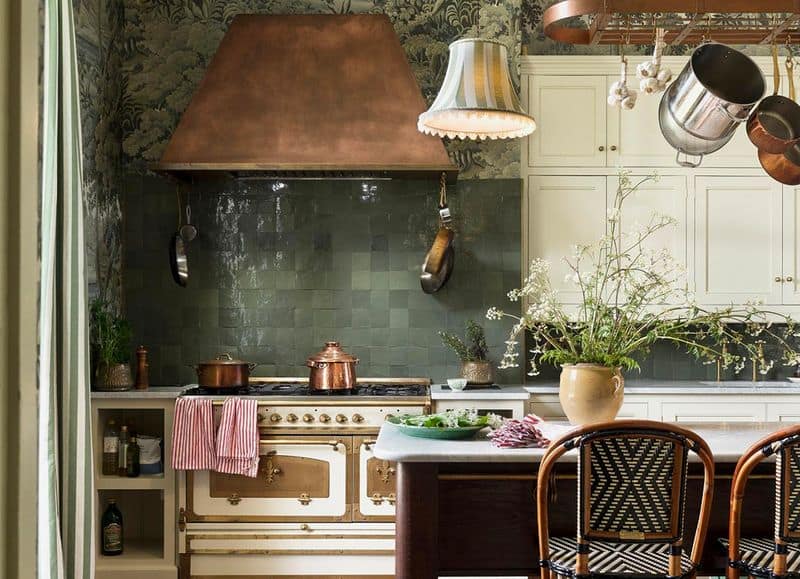
Layered textures play a significant role in the English kitchen style. Wooden beams, stone floors, and patterned rugs combine to add depth and interest to the space.
These elements work together to create a cozy, textured environment, inviting you to linger.
The tactile experience of various textures underfoot and overhead enhances the kitchen’s inviting nature.
This approach moves away from the often flat, uniform textures found in modern farmhouse kitchens, infusing warmth and character into the heart of the home.
4. Vintage Appliances
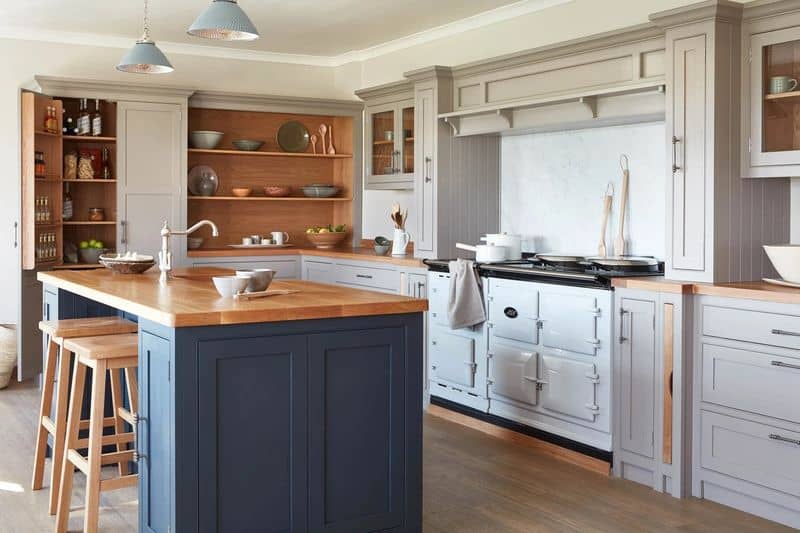
Vintage appliances are a hallmark of the English kitchen, offering a nostalgic nod to the past. An Aga cooker or a retro-styled refrigerator adds charm and functionality, bridging old and new seamlessly.
Unlike the stainless steel and high-tech gadgets of modern farmhouses, these appliances prioritize character and warmth.
Their presence in the kitchen encourages a slower, more mindful cooking experience, reminiscent of simpler times.
Such appliances not only perform their roles effectively but also serve as conversation pieces, enhancing the kitchen’s overall appeal.
5. Personalized Decor
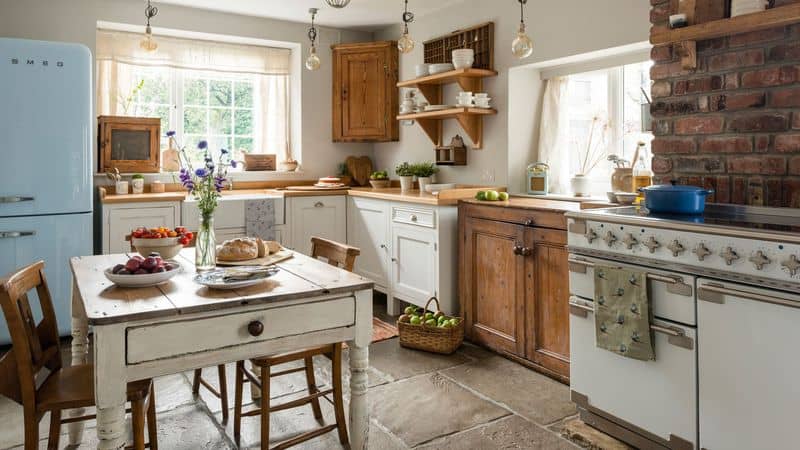
Personal touches in English kitchens set them apart from the more uniform modern farmhouses. Family photos, hand-painted tiles, and unique artwork bring a sense of personality and warmth.
These elements make the kitchen feel uniquely yours, showcasing personal history and preferences.
Unlike the often generic decor of modern farmhouse kitchens, personalized decoration invites conversation and connection.
Each piece has a story, transforming the kitchen into a living narrative, a space where memories are made and shared.
6. Open Hearths
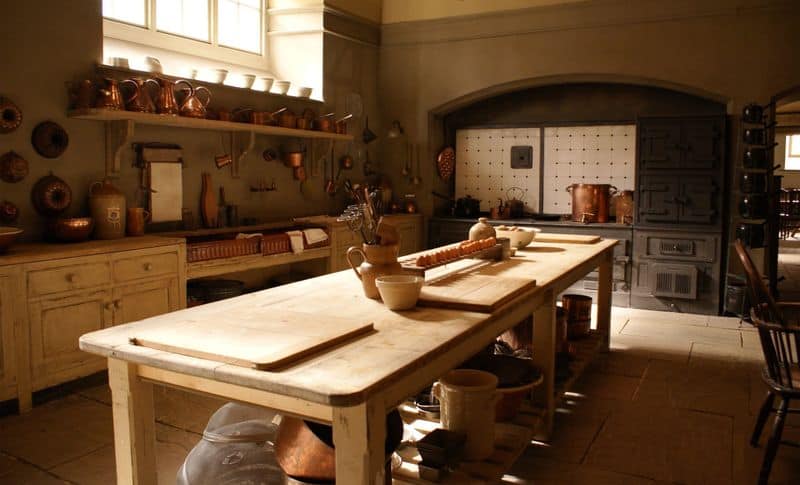
An open hearth is a cozy focal point in many English kitchens, offering warmth and charm. A stone surround and iron grates add to its traditional appeal.
This feature serves as a gathering spot for family and friends, drawing people together.
In contrast to the sleek, often unadorned fireplaces in modern farmhouses, the open hearth provides a rustic, inviting ambiance.
It transforms the kitchen into a welcoming haven, perfect for storytelling and shared moments, enhancing the sense of community and comfort.
7. Butler’s Pantry
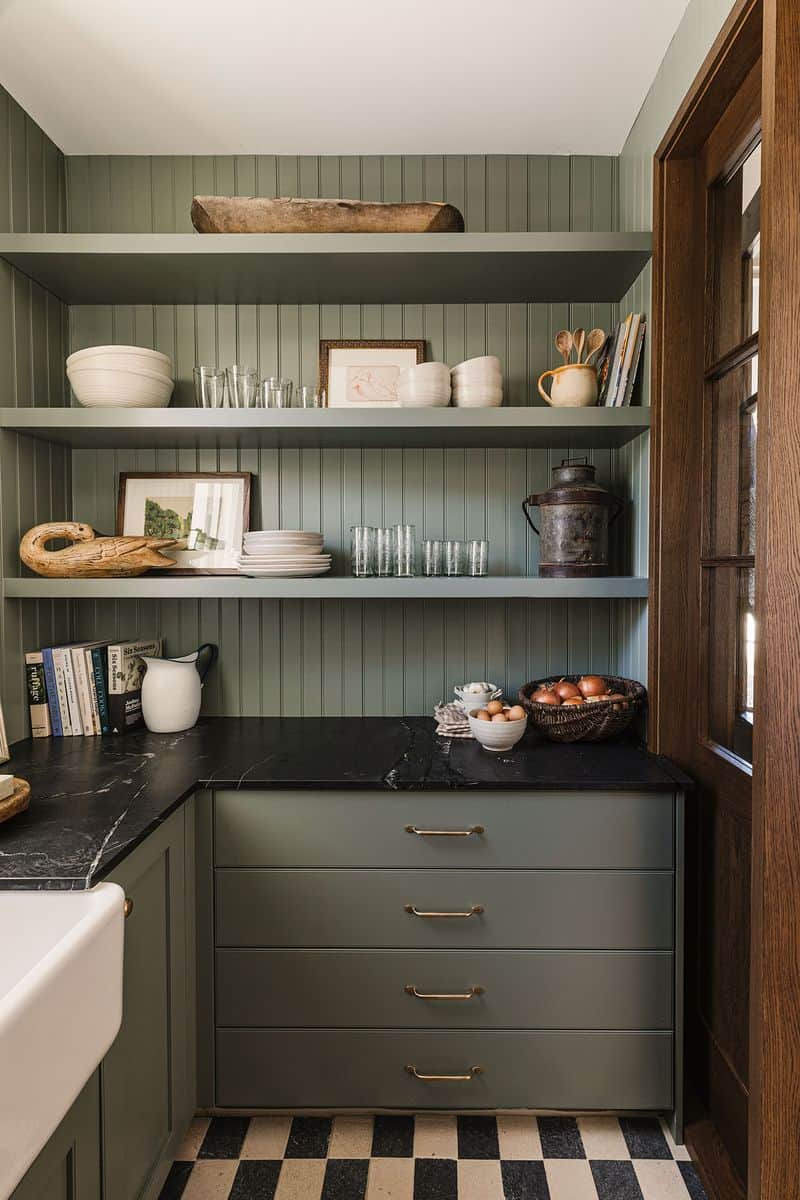
The butler’s pantry is a cherished feature in English kitchens, offering both functionality and nostalgia. Filled with glass jars of preserved goods and vintage utensils, it serves as a practical storage solution.
This space keeps the kitchen organized yet adds an old-world charm that modern farmhouses often lack.
The butler’s pantry reflects a bygone era of meticulous homekeeping, blending efficiency with aesthetic pleasure.
It’s a delightful nod to traditions of careful preservation and hospitality, making the kitchen more than just a place to cook.
8. Cozy Nooks
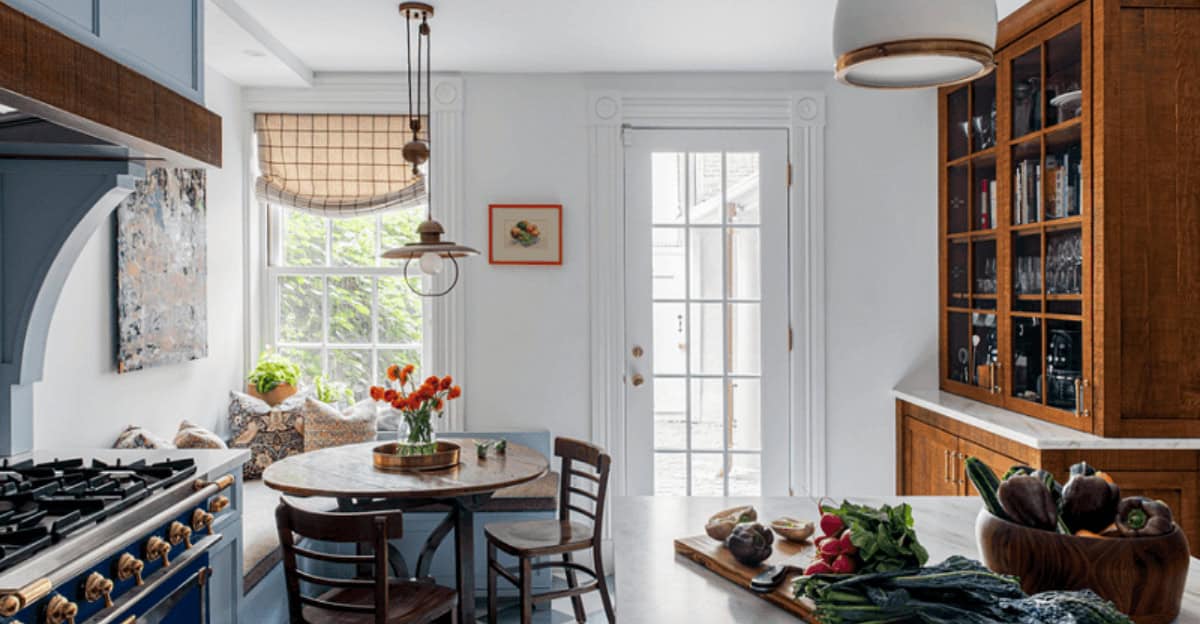
Cozy nooks in English kitchens provide a retreat from the hustle and bustle. A comfy chair, small bookshelf, and soft lighting create a perfect spot for relaxation.
These nooks offer a personal space within the open kitchen, inviting you to unwind.
Unlike the expansive, sometimes impersonal spaces in modern farmhouses, the cozy nook fosters intimacy and reflection.
It’s where you can enjoy a quiet moment with a book or a cup of tea, adding another layer of comfort to the kitchen.
9. Natural Materials
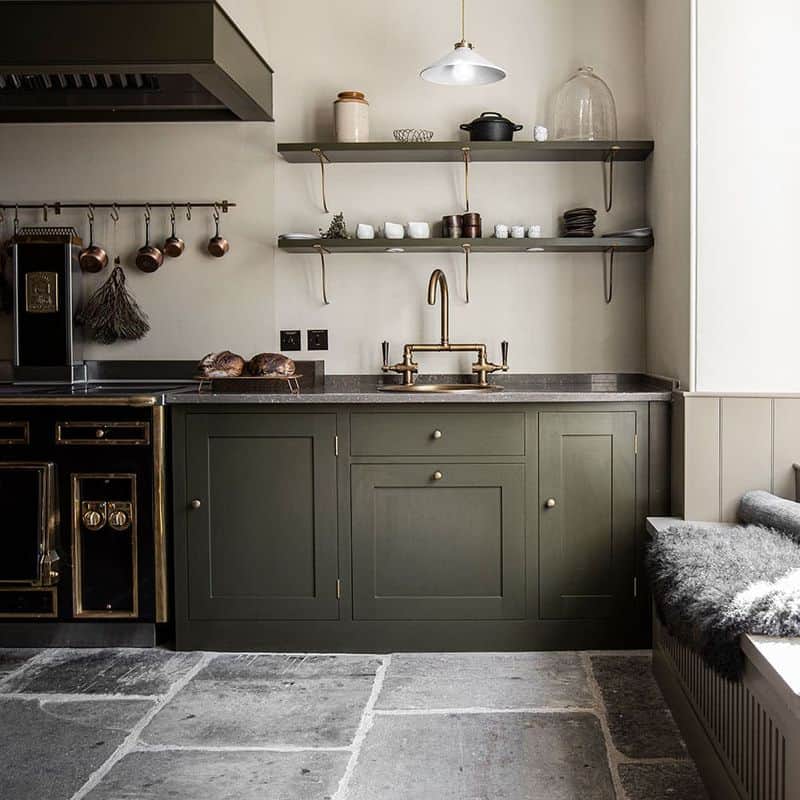
Natural materials are a cornerstone of English kitchen design, bringing the beauty of the outside in. Exposed brick walls, wooden counters, and stone sinks connect the space with nature.
These elements promote sustainability and timelessness, offering a tactile, earthy experience.
They stand in contrast to the often synthetic materials used in modern farmhouses, emphasizing authenticity and durability.
The use of natural materials creates a harmonious environment, reflecting a lifestyle connected to the rhythms of nature.
10. Functional Lighting
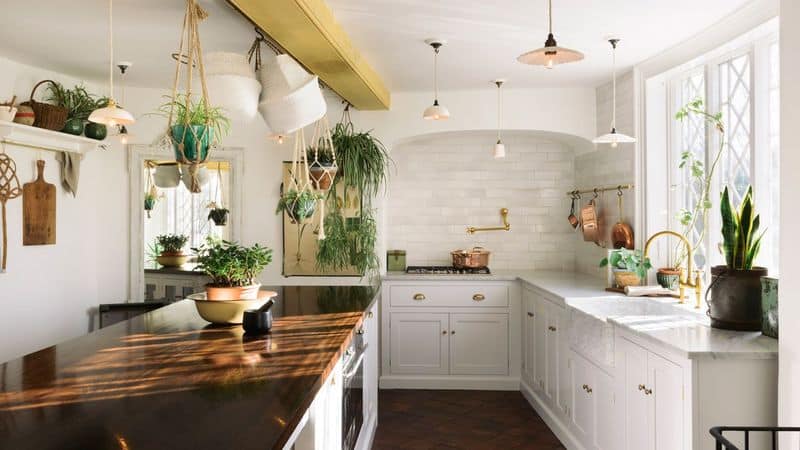
Functional lighting enhances both the aesthetic and practicality of an English kitchen. Vintage pendant lights over a central island provide illumination and style.
This lighting approach adds warmth and focus, highlighting key areas while maintaining the kitchen’s cozy ambiance.
It deviates from the sometimes harsh, industrial lighting of modern farmhouses, offering a softer, more welcoming glow.
Thoughtfully chosen lighting fixtures not only illuminate but also elevate the kitchen’s design, making it a more inviting space to gather and create.

